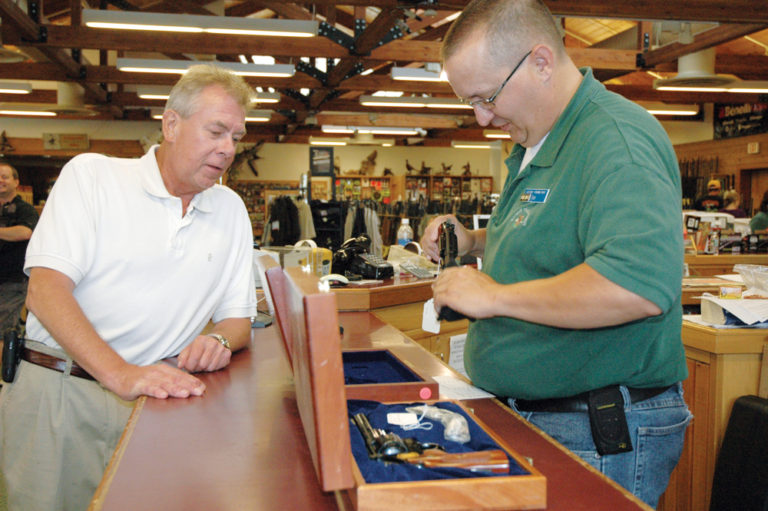
So you’re shopping for a new carry gun, and you’ve decided that it needs to be a revolver? Good for you. The revolver definitely has a lot to offer, even in this heyday of compact autoloading pistols, but there are still many things to consider before making your purchase. Following are the key considerations you will want to think about.
How Will It Be Carried?
How you plan to carry the gun has a huge impact on your range of choices. For instance, if you plan to carry it in a pocket, you’re obviously not going to want a full-size 4-inch revolver.
Pick the gun for the most restrictive carry method you’ll be using. If you’re going to carry it in an ankle holster as a back-up during the week, but as your primary gun in a tuckable appendix holster on weekends, pick the one that works on the ankle. You can always carry a small, light revolver on your belt, but the opposite is not true for a similarly sized steel model.
If you’re going to wear this gun in an ankle holster, you’ll find that it will get very dirty quite quickly. The Smith & Wesson Centennial series guns, like the 442 and 642, don’t have exposed hammers, nor the opening in the frame through which the hammer protrudes. As a result they’re better sealed against dirt and lint. That’s not to say that they’re impervious to filth getting inside them, just that they’re more resistant to getting fouled than their exposed hammer brethren.
Don’t forget about corrosion resistance either. If your carry method is a pocket holster you’re likely to discover that the pocket is a surprisingly humid place — particularly in the summer months. A gun with any amount of carbon steel (like the barrel and cylinder of the Smith & Wesson 442) will rust pretty quickly, as I can personally attest. For pocket carry, an all alloy or alloy/stainless steel alternative, like the S&W 642, is a better choice. Nothing, mind you, is corrosion proof, but stainless steel is far more resistant than any kind of carbon steel.
The new polymer revolvers, like the Ruger LCR, may prove to be among the most corrosion-resistant revolvers yet made for concealed carry.
How Much Recoil Can You Stand?
You can’t fight city hall and you can’t fight the laws of physics, either. Regardless of the caliber you’ve picked, a small light gun will have more perceived recoil than a larger, heavier gun. Once you’ve narrowed your choices into the size and caliber range that makes the most sense for your use, you’ll often have the choice between an ultra-lightweight model (polymer or alloy) and a heavier, all-steel model.
Naturally the lighter models, while easier to carry in places like pockets and ankle holsters, have a higher level of recoil than their heavier counterparts. There is no free lunch; to get the nice weight, you’ll have to put up with more pain — and the pain can be severe!
I’m no stranger to recoil, but even I find the kick of an ultra-lightweight gun, loaded with a good +P defensive load, to be more than I really want to handle. I’ve even shot one with full-house .357 Magnum rounds. You’ll notice I said “one,” and I say that because my reaction was immediate: “Never Again!”
Remember that recoil affects not just your comfort, but also your ability to deliver additional shots to your target. One round of any caliber is unlikely to stop someone cold in his or her tracks, so you have to plan to shoot more than that. Each additional round from a light but high-recoiling gun will be slower to shoot than from the same sized gun made of heavier material, because you have farther to bring the gun back on target. The lightweight guns are certainly comfortable to carry, but they will impact your ability to deliver the rapid, multiple, combat-accurate hits that actually stop bad guys.

![Best Concealed Carry Guns In 2025 [Field Tested] Wilson Combat EDC X9S 1](https://gundigest.com/wp-content/uploads/Wilson-Combat-EDC-X9S-1-324x160.jpg)


![Best 9mm Carbine: Affordable PCCs [Tested] Ruger Carbine Shooting](https://gundigest.com/wp-content/uploads/Ruger-Carbine-Shooting-100x70.jpg)
![Best AR-15: Top Options Available Today [Field Tested] Harrington and Richardson PSA XM177E2 feature](https://gundigest.com/wp-content/uploads/Harrington-and-Richardson-PSA-XM177E2-feature-100x70.jpg)
